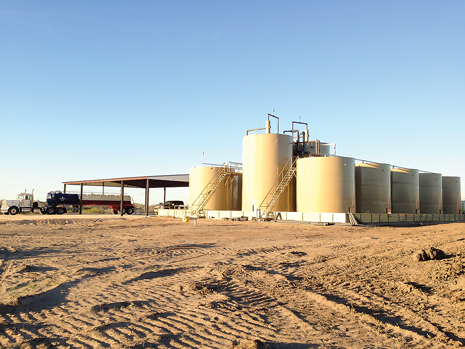American history is filled with well-intentioned laws and regulations that inexorably expand beyond their intended scope over time and result in unintended consequences. No presidency resulted in more clear examples of this than that of Richard Nixon (1969-1974). It is a little-recognized fact that virtually all of this country’s major environmental statutes—the Clean Water Act, the Clean Air Act, the Safe Drinking Water Act, and the Endangered Species Act—were either signed into law by President Nixon or conceived during his administration and signed by his successor, Gerald Ford.
Today, four decades later, the oil and gas industry finds itself under a withering assault of regulatory actions being undertaken by the Obama administration under the auspices of these Nixon-era statutes. There are many truisms about the nature of regulatory activities of the federal government, but none are truer than the following:
- Regulations issued under any federal law will always grow to exceed the law’s original intent
- Any federal regulation, no matter how well-intentioned or misguided it might be, will always remain on the books far longer than the life of its usefulness.
The last few months have seen several good examples of these truisms coming to life, and we are going to cover three of those in this issue.
EPA ISSUES “WATERS OF THE U.S.” RULE
We begin with the Environmental Protection Agency (EPA) and its issuance of a new proposed rule on March 25, governing the definition of “Waters of the United States” under the Clean Water Act (CWA).
This proposed rule would greatly expand the definition of waters that will henceforth fall under the regulatory oversight of EPA under the CWA, which currently is defined as any “navigable” waterway. EPA claims that this simple definition has led to great confusion, thus giving it justification for the proposed redefinition, which expands the agency’s regulatory reach to all tributaries, all adjacent waters and all adjacent wetlands. Further, this would include streams that are intermittent, seasonal or “ephemeral,” and even some man-made ditches, Fig. 1.
 |
| Fig. 1. If the EPA has its way, the definition of which U.S. waters would fall under the purview of the agency would be expanded considerably, from “navigable waterways” to every tributary (like the creek in this photo), all adjacent waters and all adjacent wetlands. |
|
Oklahoma Senator Jim Inhofe (Republican) reacted quickly to the EPA proposal, saying that the rule “is a massive expansion of power over the nation’s water resources. The Clean Water Act is written to include only navigable waters, but with this new rule, the agencies are giving themselves the authority to regulate everything from the nation’s largest rivers to small irrigation ditches, found on family farms in Oklahoma.”
Obviously, this proposed rule would have a major impact on any industry that, like oil and gas, develops or alters land and uses water in its operations. But it’s not just oil and gas—any activity that requires bulldozers to turn earth would now conceivably be required to obtain an EPA-issued permit, were this rule to go into effect. Mining companies, road builders, real estate developers, reservoir builders, home builders, timber companies—the list of affected businesses is almost endless.
Even ranchers are worried about the potential far-reaching impacts of the proposal. “This is a step too far, even by an agency and an administration notorious for overregulation,” said Bob McCan, president of the National Cattlemen’s Beef Association. “This proposal by EPA and the Corps would require cattlemen like me to obtain costly and burdensome permits to take care of everyday chores like moving cattle across a wet pasture or cleaning out a dugout....This proposed regulation and the burdensome federal permitting scheme will only hinder producers’ ability to undertake necessary tasks and, in turn, result in an exodus of ranchers from the field.”
Such concern is quite rational, given the perspective of history. Obtaining an EPA permit for any action is never a simple process, always time-consuming, and often prohibitively expensive. The last several decades are filled with thousands of examples of businesses being forced to spend millions of dollars on EPA-enforced environmental impact studies before ever having the opportunity to break ground on a project.
As it always does, EPA protested that such concerns were overblown. As an example, EPA Administrator Gina McCarthy claimed that her agency’s proposed rule was “not intended” to take away currently existing agricultural-related exemptions from permitting.
To detail protections for farmers related to the rule, the EPA and the Army Corps of Engineers issued a fact sheet related to agriculture that included the following clarification: “Any normal farming activity, that does not result in a point source discharge of pollutants into waters of the U.S., still does not require a permit. The proposed rule preserves existing Clean Water Act exemptions and exclusions for agricultural activities.”
Bruce Thompson, President of the American Exploration and Production Council, which represents large independent producers in the U.S., was skeptical of EPA assurances: “I think it is safe to say that the many industries that would be impacted by this rule would take issue with the comments of the EPA administrator, to the effect that this proposed rule does not broaden the scope of the Clean Water Act.”
But, even if such assurances were forthcoming from EPA, the Corps of Engineers or any other arm of the federal government, everyone knows that sidebars placed around federal regulatory actions have ways of gradually disappearing over time, as misguided court decisions are issued, and activist presidential administrations chip away at them to further political agendas. One stark example of this steady broadening of federal regulatory purview comes in the ongoing EPA efforts to regulate carbon dioxide, an outcome literally no one envisioned, when President Richard Nixon signed the Clean Air Act into law in 1970. Yet, 44 years later, the regulation of CO2 is the centerpiece of the Obama administration’s ongoing strategy to regulate vast swaths of the U.S. economy under that law.
The EPA is accepting comments related to this proposed rulemaking for 90 days following the publication of the rule in the Federal Register.
LESSER PRAIRIE CHICKEN LISTED
The Endangered Species Act (ESA) is another stark example of a law with initial good intentions, whose scope and unintended impacts have expanded dramatically over time. When Nixon signed it into law in 1973, he and other supporters touted the ESA as a means of protecting major, high-profile species, like the Bald Eagle, the Grizzly Bear and the Grey Wolf. No one, then, would have envisioned that the law’s would be extended to the point at which the federal government forces the State of California to simply flow more than 95,000 acre feet of river water to the ocean in a single crop growing season, raising the protection of a subspecies of smelt over the needs of farmers in the parched San Fernando Valley. Yet that is exactly what took place last year in the Golden State under the auspices of the ESA.
On March 27, the U.S. Fish and Wildlife Service (U.S. FWS) announced it would list the Lesser Prairie Chicken (LPC) as “threatened” under the ESA, Fig. 2. While this designation is a step below the “endangered” status under the ESA, and theoretically provides regulators and affected parties more flexibility in determining ways to go about protecting this bird, the potential negative impacts of the listing on vast swaths of five different states is very significant.
 |
| Fig. 2. The U.S. Fish and Wildlife Service has stated its intention to list the Lesser Prairie Chicken as “threatened” under the Endangered Species Act, a potential action that could create additional headaches for producers (photo courtesy of U.S. FWS). |
|
U.S. FWS Director Dan Ashe acknowledged the decision would not be popular with governors in the five affected states—Texas, Oklahoma, Kansas, Colorado and New Mexico—but said the “best available science” dictated the listing. “The lesser prairie-chicken is in dire straits,” Ashe said. “The bird is in decline and has been in decline for more than a decade.”
The U.S. FWS decision also specified that oil and gas companies participating in the Five State Conservation Plan, adopted in 2013, will be able to continue activities to protect the LPC under that plan, which will continue to be managed by the states. To date, more than 3 million acres of land in the five affected states have been set aside by ranchers, landowners, and oil and gas companies as habitat to promote the LPC’s recovery. The plan’s goal is to increase the bird’s population to 67,000 from its current estimate of 18,000. Companies not participating in this plan will become subject to other mitigation and conservation measures developed by U.S. FWS and related to the listing.
Earlier in the month, Oklahoma Attorney General Scott Pruitt filed a lawsuit related to the Obama administration’s settlement of a lawsuit with the Center for Biological Diversity (CBD) that resulted in the requirement that U.S. FWS should make listing decisions on the LPC, and hundreds of other plant and animal species under the ESA, by late 2015. In this suit, the State of Oklahoma essentially challenges the validity of the so-called “sue and settle” practice that U.S. FWS has engaged in with groups like CBD, Wild Earth Guardians and others over the last 15-plus years.
The Washington Examiner did a good job of succinctly describing this “sue and settle” practice in an editorial published in May 2013:
“First, the private environmental group sues the EPA in federal court, seeking to force it to issue new regulations by a date certain. Then, agency and group officials meet behind closed doors to hammer out a deal. Typically in the deal, the government agrees to do whatever the activists want. The last step occurs when the judge issues a consent decree that makes the deal the law of the land. No messy congressional hearings. No public comment period. No opportunity for anybody outside the privileged few to know how government regulatory policy is being shaped, until it’s too late.”
So, basically, this “sue and settle” process enables these environmental groups to force listing decisions by U.S. FWS without having to go through the appropriate administrative and rulemaking processes with which all other parties must comply.
This strategy employed by these radical organizations is less about listing species that are truly on the verge of extinction—the ostensible rationale for the ESA—than it is about slowing or stopping human progress. Far from being focused on species that are actually rare and in danger of disappearing from the face of the earth, the strategy, instead, focuses on suing U.S. FWS to list species that exist in some state of abundance over large geographic areas, under the theory that human expansion and industrial projects are diminishing their natural habitat. The more abundant the species, the greater its geographic extent, the greater the negative impact it can have on human progress. In addition to the LPC, good recent examples of species pursued under this strategy include the Dunes Sagebrush Lizard and the Sage Grouse.
Of course, every species has its own factual situation, and well-intentioned people can argue the merits of this listing of the LPC either way. But the fact that this listing was made as the result of this abusive process, without any consideration of the negative economic and societal impacts that will result, will always leave a bad taste in the mouths of many of the affected parties. In the meantime, oil and gas operators in the affected regions will have to find ways to conform their operations to the restrictions imposed under the listing.
CRUDE OIL EXPORT BAN
There has been a growing amount of discussion recently about the need for the U.S. government to allow the export of more domestically produced crude oil overseas before it is refined, Fig. 3. Since we’re focused on unintended consequences in this issue, one of the unintended consequences of the ongoing oil and gas boom in the U.S. has been the creation of a massive new supply of sweet crude oil from large shale formations like the Eagle Ford. This supply is threatening to overwhelm the capabilities of the domestic refining industry.
 |
| Fig. 3. If the U.S. federal government lifts the ban on crude oil exports, it could stimulate the construction of additional tankers, similar to this recent, new Aframax design by Finland’s Wärtsilä (image courtesy of Wärtsilä). |
|
The existing restrictions on the export of crude oil date back to 1975. The restrictions were put in place via a bill signed into law by then-President Gerald Ford that year, in response to the 1973 Arab oil embargo and the energy crisis that had developed from that event. We sit here 39 years later in a completely different world, with a completely different supply-and-demand picture where crude oil is concerned, but with the same set of restrictions in place.
Nowhere has the world changed more than in the area of oil production and refining, and the essential crux of the issue around oil exports is that there is a growing mis-match between the quality of the crude oil being produced in the U.S., and the volumes and types of crude oil that U.S. refineries are set up to handle.
IPAA President Barry Russell put it succinctly: “Oil production is booming in the U.S. The use of new technologies, most notably horizontal drilling and hydraulic fracturing, have unlocked an abundant supply of light, sweet crude oil, which most U.S. refineries are no longer designed to process.”
In the intervening years between 1975 and today, as the U.S. began to import up to 65% of its daily oil needs, refineries along the U.S. Gulf Coast—which handle the vast majority of crude imported from overseas suppliers—were increasingly set up to process “heavy” crudes that come to the U.S. from countries like Saudi Arabia, Iran and Venezuela. At some point in the near future, it is likely that a so-called “blend wall” will be hit, with some volumes of light, sweet crude unable to find a home in the U.S. to be refined, an event that is likely to create significant instability in oil markets.
Over the last few months, both refiners and producers have been assessing options in dealing with this looming issue, with few really liking what they see. Thus, there is growing advocacy in favor of the federal government to at least lessen, if not eliminate entirely, the current restrictions on crude oil exports.
 |
| The oil and gas industry is taking steps for environmentally prudent management of shale frac water. Photo courtesy of Eagle Ford Water and Disposal company. |
|
Elimination of the statutory restriction would require an act of a highly-divided Congress that has a hard time acting on anything, along with a presidential signature. However, the current law is not an outright, comprehensive ban, and the Commerce Department does manage a permitting process via regulation that allows for a relatively small volume of limited exports. The law governing the issuance of such permits leaves the decision largely at the president’s discretion.
Specifically, the Energy Policy and Conservation Act of 1975 directs the president to…
“promulgate a rule prohibiting the export of crude oil and natural gas produced in the United States, except that the President may … exempt from such prohibition, such crude oil or natural gas exports which he determines to be consistent with the national interest and the purposes of this chapter.” The act further provides that the exemptions to the prohibition should be “based on the purpose for export, class of seller or purchaser, country of destination, or any other reasonable classification or basis as the President determines to be appropriate and consistent with the national interest and the purposes of this chapter.”
So, as with the ultimate approval of the Keystone XL pipeline, and barring an unanticipated (as of now) act of congress, the final decision on the issue of expanding exports of crude oil produced in the United States currently lies on the desk of President Obama. If he were so inclined, the President could do what he has done so often on other matters, and issue an executive order containing a finding that permitting the export of additional volumes of U.S. crude oil is in the national interest, and direct the Commerce Department to promulgate regulations to make that happen.
Alby Modiano, president of the U.S. Oil & Gas Association, captured his membership’s feelings thusly: “This 1970s-era policy has outlived its usefulness, and we hope the President will work with the Commerce Department and the Congress to find ways to increase export licenses before a crisis occurs.”
That would be a completely rational action to take. But, as we have seen so often, where U.S. energy policy is concerned, rationality rarely becomes the key factor in making such decisions. 
|






